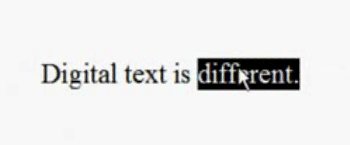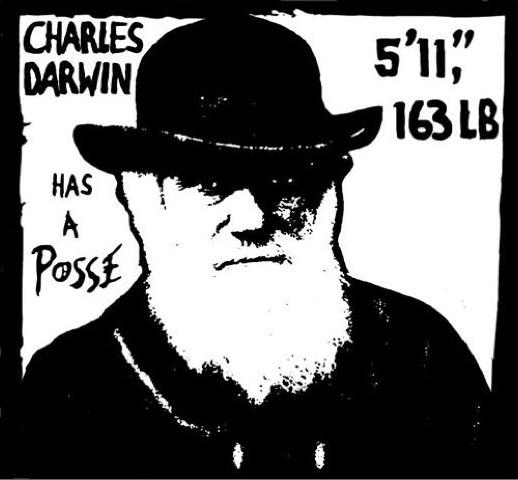Whether we like it or not, geoengineering -- a process I've taken to calling "(re)terraforming the Earth" -- is now on the table as a strategy for dealing with onrushing climate disaster. This isn't because it's a particularly good idea; as far as we presently know, the potential negative impacts of geoengineering projects seem to significantly outweigh any benefits. Nonetheless, (re)terraforming has drawn an increasing amount of attention over the past few months. One key reason is that, if it could be made to work, it wouldn't just moderate climate change -- i.e., slow it or stop it -- it would actually serve as a climate change remediation method, reversing global warming.
The cynical and the insipid apparently believe that pursuing the geoengineering option would allow us to avoid making any changes in technology or behavior intended to reduce greenhouse gas output. This sort of logic is wrong, utterly wrong. For any plausible geoengineering project to succeed, we'd have to have already stabilized the climate. As it turns out, the brilliant and clearly-needed advances in technology and changes in behavior supported by those of us who proudly wear the label "bright green" will do exactly this, reducing, even eventually eliminating, anthropogenic emissions of greenhouse gases. We need to do this as quickly as possible. As the saying goes, if you want to get out of the hole you're in, the first thing to do is stop digging.
But none of the bright green solutions -- ultra-efficient buildings and vehicles, top-to-bottom urban redesigns, local foods, renewable energy systems, and the like -- will do anything to reduce the anthropogenic greenhouse gases that have already been emitted. The best result we get is stabilizing at an already high greenhouse gas level. And because of ocean thermal inertia and other big, slow climate effects, the Earth will continue to warm for a couple of decades even after we stop all greenhouse gas emissions. Transforming our civilization into a bright green wonderland won't be easy, and under even the most optimistic estimates will take at least a decade; by the time we finally stop putting out additional greenhouse gases, we could well have gone past a point where globally disastrous results are inevitable. In fact, given the complexity of climate feedback systems, we may already have passed such a tipping point, even if we stopped all emissions today.
In other words, while stopping digging is absolutely necessary, it won't actually refill the hole.
I'm hopeful that eliminating anthropogenic greenhouse gas emissions will be enough; if more optimistic scenarios are correct, ceasing to emit additional greenhouse gases in the next decade or two will be sufficient to avoid real disaster. This would be a wonderful outcome, and not just because we would have dodged the global warming bullet. Many of the best steps we can take along these lines are distributed, incremental, collaborative, and quite often make use of open systems and standards: all very good things, with larger social implications than just for climate moderation, and the heart of what Open the Future is all about.
But if we learn that we've already passed the climate disaster tipping point, if we want to avoid a civilization-threatening outcome, we'll have to figure out how to refill the hole -- to reduce overall temperature increases, or to remove methane, CO2 or other greenhouse gases from the atmosphere. And that means that we'd have to look at geoengineering.
Or, to be more accurate, we'll have to keep looking at geoengineering. As it happens, the "(re)terraforming to fix global warming" genie is already out of the bottle. It happened just last week.
On February 9, 2007, Virgin Corporation honcho Richard Branson announced that he would give $25 million to the winner of the "Virgin Earth Challenge:"
The Virgin Earth Challenge will award $25 million to the individual or group who are able to demonstrate a commercially viable design which will result in the net removal of anthropogenic, atmospheric greenhouse gases each year for at least ten years without countervailing harmful effects. This removal must have long term effects and contribute materially to the stability of the Earth’s climate.
Reaction in the green blogosphere has been cautiously optimistic, with most responses noting a comparison to the "X-Prize" for private space flight, and some observing that air travel, such as that provided by Virgin Airways, remains a big source of greenhouse gases. Much to my surprise, however, none of the major green blogs noted the most significant aspect of this competition:
This is explicitly a call for geoengineering projects.
The Virgin Earth Challenge isn't simply looking for better ways to reduce or eliminate new greenhouse gas emissions, it's looking for ways to remove existing CO2 and other greenhouse gases from the atmosphere -- that's what "net removal" means. This competition seeks ways to make an active, substantial change to the Earth's geophysical systems. Richard Branson is underwriting terraforming, and given that the consensus new mainstream environmentalist position is to be solidly anti-geoengineering, the lack of reaction to what is essentially the "Terraforming Challenge" is a bit surprising.
But if we're already looking at geoengineering, and may potentially need to consider it as a necessary path to survival, how can we do it in a way that has the best chance to avoid making matters worse?
I've already given away the answer in the title: open up the process.
I've long argued that openness is the best way to ensure the safe development and deployment of transformative technologies like molecular nanotechnology, general machine intelligence, and radical human bioenhancements. Geoengineering technologies should be added to this list. The reasons are clear: the more people who can examine and evaluate the geotechnological proposals, the greater the likelihood of finding subtle flaws or dangers, and the greater the pool of knowledge that can offer solutions.
As I put it in my 2003 essay for the final Whole Earth magazine (and the source of this blog's name), "Open the Future,"
Opening the books on emerging technologies, making the information about how they work widely available and easily accessible, in turn creates the possibility of a global defense against accidents or the inevitable depredations of a few. Openness speaks to our long traditions of democracy, free expression, and the scientific method, even as it harnesses one of the newest and best forces in our culture: the power of networks and the distributed-collaboration tools they evolve.
Broad access to... [transformative] tools and knowledge would help millions of people examine and analyze emerging information, nano- and biotechnologies [and geotechnologies], looking for errors and flaws that could lead to dangerous or unintended results. This concept has precedent: it already works in the world of software, with the "free software" or "open source" movement. A multitude of developers, each interested in making sure the software is as reliable and secure as possible, do a demonstrably better job at making hard-to-attack software than an office park's worth of programmers whose main concerns are market share, liability, and maintaining trade secrets.
[...]The more people participate, even in small ways, the better we get at building up our knowledge and defenses. And this openness has another, not insubstantial, benefit: transparency. It is far more difficult to obscure the implications of new technologies (or, conversely, to oversell their possibilities) when people around the world can read the plans.
The idea of opening transformative technologies is controversial. One argument often leveled against it is that it puts dangerous "knowledge-enabled" technologies into the hands of people who would abuse them. Fortunately, such a charge isn't likely to apply in any significant way to discussions of geotechnology, largely because the industrial capacity required to take advantage of these technologies is well beyond most countries, let alone super-empowered individuals and small groups. Another criticism of the open approach attacks it for undermining the market. But concerns about proprietary information and profit potential are hard to fathom with terraforming -- there would be no plausible way to limit access to climate change remediation only to those who pay for it. Ultimately, the downsides of making potential geoengineering methods open are tiny, while the benefits are massive.
It's not entirely clear if an open source approach for terraforming technology would be allowed within the Virgin Earth Challenge rules. The "terms and conditions" appear to require secrecy during the development process, but leave open the possibility of a variety of licensing conditions afterwards. Presumably, this would include open source/free access licenses. This is better than nothing, but the secrecy-during-development requirements should have an exception for open source competitors. The value of the "many eyes" approach is enhanced if it isn't limited to after-the-fact analysis. Discovery of a flaw requiring a redesign is less costly -- and less likely to be ignored -- if it happens early in the development process.
Let me be clear: I am not calling for geoengineering as the solution to global warming. We know nowhere near enough to make (re)terraforming a plausible or safe option. Our best pathway to avoiding climate disaster remains the rapid reduction and elimination of anthropogenic greenhouse gases. But I am calling for us to learn more about geotechnologies. Like it or not, we've entered the era of intentional geoengineering. The people who believe that (re)terraforming is a bad idea need to be part of the discussion about specific proposals, not simply sources of blanket condemnations. We need their insights and intelligence. The best way to make that happen, the best way to make sure that any terraforming effort leads to a global benefit, not harm, is to open the process of studying and developing geotechnological tools.
It may well be the best example yet seen of the importance of opening the future.



 • The Web is People!: Michael Wesch, Assistant Professor of Anthropology at Kansas State University, has assembled a terrific four-and-a-half-minute video called "
• The Web is People!: Michael Wesch, Assistant Professor of Anthropology at Kansas State University, has assembled a terrific four-and-a-half-minute video called "
 The "Good Ancestor Principle" is based on a challenge posed by Jonas Salk:
The "Good Ancestor Principle" is based on a challenge posed by Jonas Salk:


 • Akira Kurosawa's
• Akira Kurosawa's  • 17-Year-Old Madhavi Gavini, a student at the Mississippi Institute of Science and Mathematics, has
• 17-Year-Old Madhavi Gavini, a student at the Mississippi Institute of Science and Mathematics, has 
 • Finally,
• Finally, 
